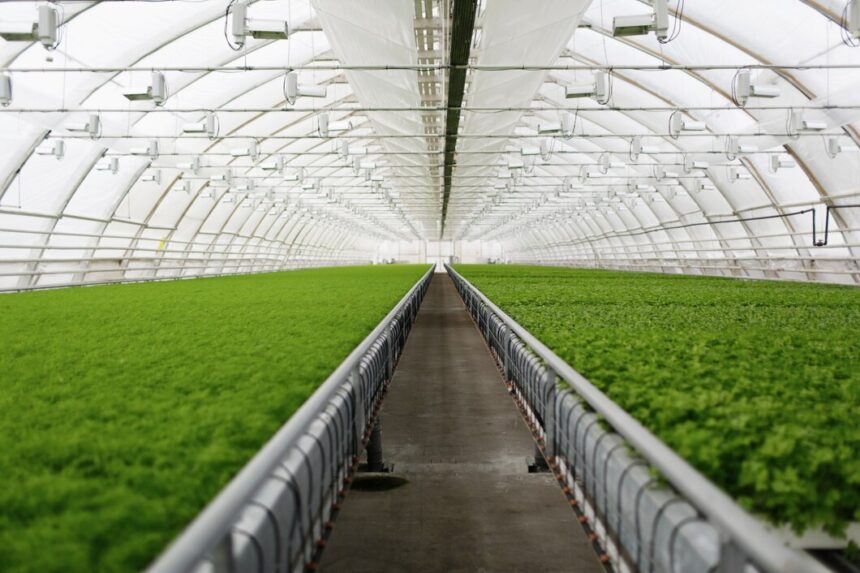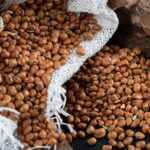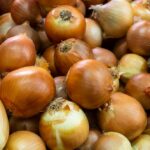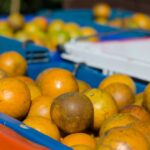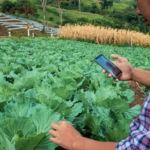South Africa’s agricultural sector faces a myriad of challenges—climate change, water scarcity, rising input costs, and the need for more sustainable farming practices. Yet, there is hope on the horizon, particularly when looking to global innovations. One such example is the Netherlands, a country that has turned its agricultural sector into a high-tech powerhouse, particularly in the area of greenhouse farming. Known for its world-leading greenhouse technology, the Netherlands has successfully utilized controlled-environment agriculture to grow crops efficiently, sustainably, and profitably. South Africa could stand to learn a great deal from this innovative approach, especially in addressing the country’s own agricultural challenges.
The Dutch Model: A High-Tech Agricultural Revolution
The Netherlands is renowned for its highly efficient greenhouse farming systems, which cover thousands of hectares and contribute significantly to the country’s status as one of the world’s largest agricultural exporters. The key to this success lies in a combination of cutting-edge technology, precision farming, and sustainability.
Dutch greenhouses are equipped with advanced climate control systems that monitor and adjust temperature, humidity, light, and CO2 levels to create the optimal environment for plant growth. Additionally, they incorporate automation and robotics for planting, harvesting, and even monitoring plant health, minimizing labor costs while increasing efficiency. This tech-driven approach has not only resulted in higher yields but also significantly reduced water and energy consumption.
One of the most notable features of the Dutch greenhouse system is its sustainability. The Netherlands utilizes energy-efficient lighting, heat recycling systems, and renewable energy sources like solar and wind power. By maximizing the use of natural resources and minimizing waste, Dutch greenhouses have become a model of sustainable agriculture.
What South Africa Can Learn from the Netherlands
While the scale and infrastructure of the Netherlands may seem a far cry from South Africa’s agricultural landscape, the lessons from the Dutch model are highly relevant and adaptable to the South African context.
- Water Efficiency
South Africa is one of the driest countries in the world, and water scarcity remains one of the most significant challenges facing farmers. The Netherlands, however, has developed greenhouse systems that use advanced irrigation methods, including hydroponics and drip irrigation, which allow for precise control of water usage. These systems enable crops to grow with minimal water waste, as water is reused and filtered within the greenhouse environment.
By adopting similar technologies, South African farmers could drastically reduce their water consumption while maintaining or even improving yields. The implementation of water-saving irrigation systems, alongside rainwater harvesting and desalination technology, could help mitigate the impacts of droughts and water shortages.
- Energy Efficiency and Sustainability
Energy consumption is another concern for South African farmers, particularly in regions with inconsistent power supply. The Dutch have mastered the art of energy efficiency in greenhouses, utilizing heat-recycling systems, energy-efficient LED lighting, and renewable energy sources to minimize reliance on external power grids. This not only lowers energy costs but also reduces the carbon footprint of agricultural operations.
For South Africa, incorporating renewable energy solutions—such as solar panels and wind turbines—into greenhouse farming could provide a sustainable and cost-effective way to power operations. Additionally, energy-efficient technologies can help reduce the overall environmental impact of farming, making it more sustainable in the long run.
- Technology and Automation in Farming
One of the Netherlands’ most significant achievements is its integration of automation and robotics in greenhouse farming. Tasks such as planting, harvesting, and sorting are often carried out by robots, improving productivity and reducing the need for manual labor. Drones and sensors are also used for monitoring crop health and growth conditions, providing real-time data that helps farmers make informed decisions.
South African farmers could benefit from introducing automation and data-driven technology into their operations. By adopting smart farming techniques, including the use of drones, sensors, and AI-powered analytics, farmers can enhance crop monitoring, increase yields, and reduce labor costs. This would be especially advantageous for small-scale farmers who may struggle with labor shortages and the costs associated with manual farming practices.
- Controlled-Environment Agriculture (CEA)
The controlled-environment agriculture (CEA) model used in Dutch greenhouses allows crops to be grown year-round, independent of external climate conditions. This is especially beneficial in regions with erratic weather patterns or extreme climates. By creating an optimal growing environment within the greenhouse, farmers can ensure consistent, high-quality yields without being at the mercy of seasonal fluctuations.
South Africa’s unpredictable climate, including droughts and extreme weather events, makes CEA particularly relevant. By investing in controlled-environment farming, South African farmers could increase the resilience of their crops, ensuring that they are less susceptible to climate-related disruptions. Additionally, CEA offers the potential for urban agriculture, enabling farming in areas where traditional agriculture would not be feasible.
- Sustainability and Circular Economy
Dutch greenhouses are designed with a circular economy model in mind. This means that waste is minimized, and resources are continuously reused within the system. For example, plant waste can be converted into compost, and excess heat from greenhouses can be used to warm other areas or even supply nearby communities.
South Africa, which struggles with waste management and resource efficiency, could adopt similar practices in its agricultural sector. By focusing on reducing waste, recycling nutrients, and repurposing materials, South African farmers can lower costs and improve sustainability. A circular agricultural system would not only benefit individual farms but also contribute to national efforts to combat waste and promote a more sustainable food production system.
Challenges and Opportunities
While the Dutch model offers invaluable lessons for South Africa, there are challenges to its adoption. The upfront costs of establishing high-tech greenhouses and implementing advanced technologies can be a barrier, particularly for small-scale farmers. However, government support, subsidies, and private investment in agricultural innovation could help overcome these financial hurdles. Additionally, the transfer of knowledge and expertise from the Netherlands to South Africa through partnerships and collaborations could accelerate the implementation of these technologies.
Moreover, not all of the Netherlands’ practices may be directly applicable to South Africa’s diverse agricultural conditions. For example, the scale of greenhouse farming in the Netherlands might not be feasible in every South African region, but scaled-down versions of these technologies could still provide substantial benefits.
Looking Forward
The Netherlands has set the bar high for agricultural innovation, particularly in the field of high-tech greenhouses. South Africa, with its unique agricultural challenges, can look to the Dutch example for solutions that address water scarcity, energy inefficiency, and the need for sustainable farming practices. By integrating advanced technologies, sustainable practices, and smart farming solutions, South Africa’s agricultural sector can become more resilient, efficient, and profitable, while contributing to global sustainability efforts.
In the future, South Africa could lead the way in transforming its agricultural sector through high-tech greenhouses, creating a more sustainable, efficient, and food-secure future for its people.

